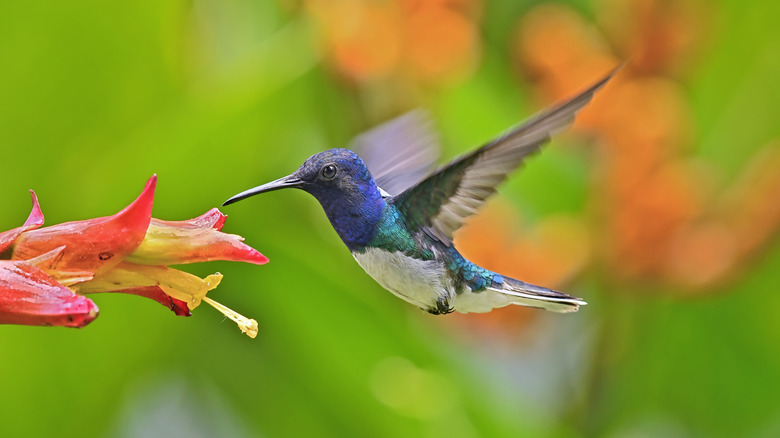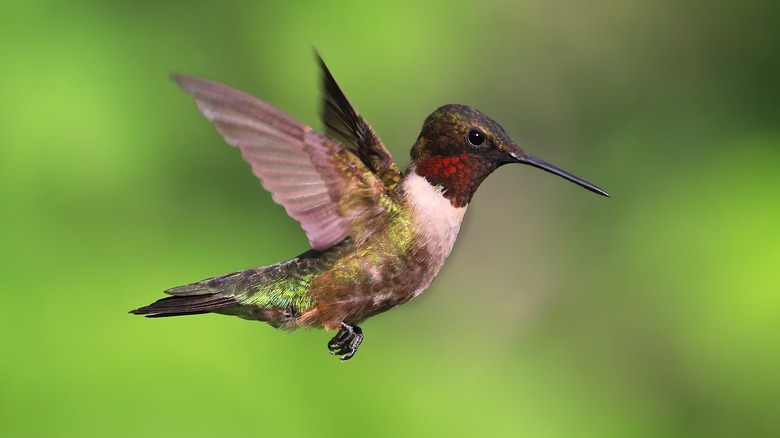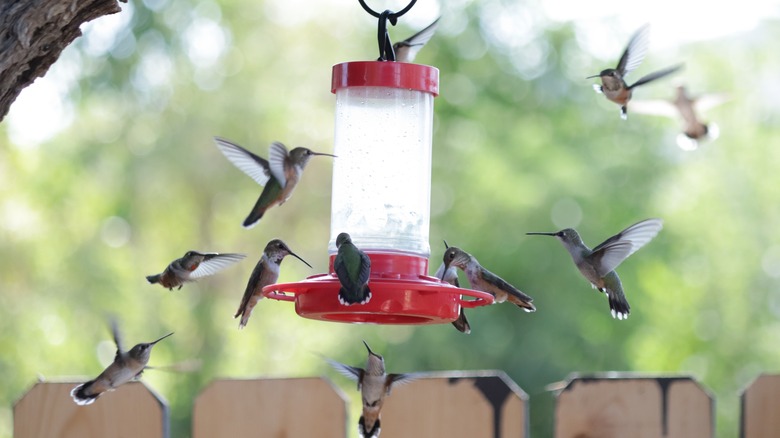Why You Might Actually Be Seeing The Same Hummingbirds In Your Yard Every Year
Can you think of a more incredible creature than a hummingbird? It is a real challenge. The list of facts about these tiny animals is full of superlatives. They are the only birds who are able to fly backwards. They have extremely large hearts in proportion to their body size, and the bee hummingbird is the smallest bird in the world. Individual hummingbirds can weigh less than a penny but eat more than twice their body weight in nectar every day.
One of the most charming characteristics of hummingbirds is that they often return to the same feeders year after year, even after crossing thousands of miles during their migration. Researchers who follow banded hummingbirds' activity noticed that many individuals appeared at the same feeders, and often on the same day they had the previous year. Most hummingbirds make their way back to the same breeding grounds; this could be their main motivation for a yearly return. While experts aren't certain exactly how hummingbirds manage this feat, they do have some ideas. Hummingbirds have plenty of practical reasons to choose a site to come back to every season. There are heaps of benefits of attracting hummingbirds to your yard. If you're lucky enough to be graced by visits from ruby-throats, broad-tails, and more, read on to discover ways to lure these jewels of nature to your feeders.
Why and how do hummingbirds return to the same places?
What makes a spot stand out as a prime feeding and nesting location for hummingbirds? It has much to do with the right combination of available food, nesting space, and nesting materials. When a bird finds this ideal mix, remembering it for the future saves them lots of trouble and energy searching for a new site each year. These birds are extremely territorial nature. Once they have claimed their perfect location, they are highly motivated to protect their personal domain.
Surprisingly enough, hummingbirds have no sense of smell and minimal taste buds. With the help of only three powerful senses, the fact that hummingbirds often return to the same yards several seasons later is mind-boggling. What tells these hummingbirds that your garden supported them during the last migration season or for breeding? Ornithologists and bird enthusiasts know that hummingbirds' navigation instincts are strong, probably playing the largest role in their repeat visits. However, other factors may also come into play.
Scientists think hummingbirds use the sun as a powerful guide. The birds potentially track both the sun's position in the sky and the amount of daylight to assist them in locating past stopping points. Hummingbirds are also sensitive to magnetic cues that serve as an internal compass, helping them move along a familiar path. They may not smell or taste very well, but their vision is a strong navigation tool. Researchers believe that hummingbirds recognize landmarks like rivers, roads, or mountain ranges along their migration routes that they use as guides.
Increasing your chances of repeat hummingbird visits
By making your outdoor space as inviting to hummingbirds as possible, your yard will likely be a more tempting refueling point. Attracting hummingbirds to your garden involves providing them the right combination of food, shelter, and water. Their sharp vision helps them hone in on flowers in certain colors. Hummingbirds are especially attracted to red and orange flowers with tubular blooms. Some top choices for your floral bird buffet are honeysuckle, pentas, clove pinks and daylilies.
Hanging feeders or planting flowers near trees or bushes is a way to make food easy for birds to access while they are nesting or resting among the branches. They rely on perches also to help them keep watch for danger. Water sources in your yard can also be a hummingbird magnet. They bathe often, and while birdbaths can keep them happy, features with moving water or mist are particularly alluring for a refreshing bath.


